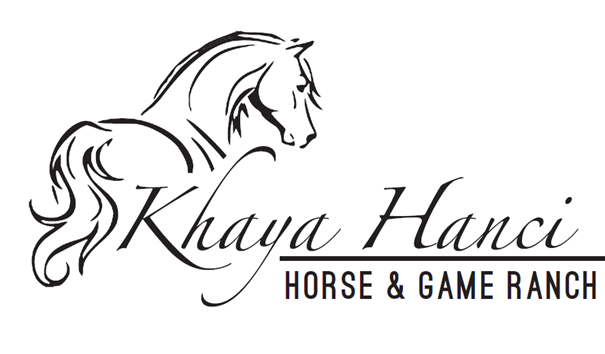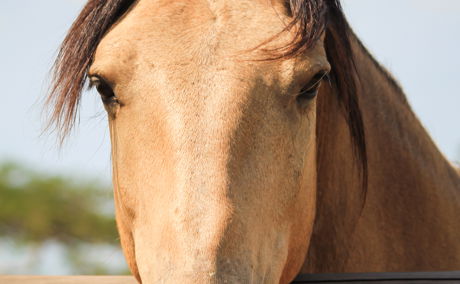A recent study by the University of Arizona, in conjunction with the HeartMath Institute, have uncovered some surprising details about what happens to our hearts when we interact with horses, and the potential benefits to our well-being.
Behold... A White Buffalo Calf
We recently added Khaya Hanci Horse Ranch to our portfolio, only to be presented with a rare white buffalo calf, that we have lovingly named Snowflake. Not only is Snowflake's condition an extreme rarity, but the appearance of such an animal would be regarded as significant in terms of one Native American legend - especially at this time.
Usually we would kick off an article with something about a horse, not unlike a Biblical prophecy that seems all too familiar these days. But, Khaya Hanci has recently added a game farm to its marque, and Lo! A White Buffalo Calf! And with it, a lesser-known Native American prophecy that seems quite relevant, all things considered.
Greetings Snowflake!

An undomesticated white animal is always a rarity. Unsurprisingly, white is not a good colour for camouflage in the African bush, and typically, natural selection tends to eliminate those genes in swift fashion. To state it unambiguously, if a prey animal could hold up a sign to predators saying “eat me”, a nice white pelt would be it. That's why the other buffaloes tend to encircle their little bright gem, keeping a wary eye out for even the most near-sighted lion.

There are a number of ways in which a bovine ends up being so special. The less likely way is albinism, wherein the genes are incapable of expressing melanin pigment. This condition is usually associated with visual or hearing impairments and pink eyes. A more likely reason for whitening is leucism, where the animal is likely to have blue eyes. Leucism has been postulated to be due to regressive gene expression (think ice age and snow), which tends to happen in isolated groups due to genetic bottlenecks. Yet another reason could be that the buffalo also carries the genes of white-coated domesticated cattle. For now, it would seem that Snowflake is likely leucistic - with beautiful blue eyes!
While there are scant statistics on the number of white African Buffaloes, the National Bison Association in the U.S. estimates that one in every 10 million births produce a white calf. An extreme rarity.
So should we see Snowflake as a meaningful sign? Let’s look at the Native American legend.

(Creative Commons image sourced from https://www.flickr.com/photos/archer10)
The Lakota Sioux tell of a Wakan Wiyan (holy woman spirit) that visited the Plains tribes of South Dakota in deep antiquity, riding on a bison. She brought abundance to the tribes and taught knowledge of the Earth Mother, Grandfather Creator and the Great Spirit. She taught the seven ceremonies, including ceremonies of gratitude, provided the sacred ceremonial prayer pipe and gave the seed for maize, melon and squash. She blessed the people of the Plains and asked them to keep and share her prophecies, and the seeds, with others.
As the holy woman spirit departed from the people, she turned into a buffalo calf which rolled on the earth, turning from black to brown to yellow with each roll, and finally to white. And this is how she became known as Pte Ska Win Yan, White Buffalo Calf Woman. As she departed, the Wakan promised to reappear at “A Time of Great Change”.
Time of Great Change? It certainly seems to be.
A raging pandemic, devastating annual wildfires and a bevy of other ecological threats loom large over our lives. We see radical shifts in public opinion and policy with challenges to the political status quo tied to emergent economic issues. Simultaneously, many more people are awakening to our role in nature and our responsibility in defending the Earth. Most would agree that we live in a time of unprecedented change.
For further significance, let’s look at those statistics again. In the 1800s, before the great bison massacre of 1871-2, up to 40 million bison roamed the plains. In three-quarters of a century there was ONE recorded white buffalo sighting. In 1876 there was another. Then, in 1933, a white buffalo named Big Medicine was born in Montana, followed by another 40 white bison births in a population that averaged 27,000 individuals! A jump of one in 10 million to 1 in 675! The ratios are incomparable.
Arguably the greatest authority on the phenomenon would be the 19th generation Keeper of the Sacred White Buffalo Calf Pipe, Chief Arvol Looking Horse of the Lakota Sioux. The chief has become known for raising awareness of the prophecy of the White Buffalo Calf, reaching out to world leaders and advocating for the role that we must play to ensure the best outcomes for our world in these times. For Chief Arvol, the White Buffalo Calf is a sign of our need to bless the Earth and honour and protect its sacred places. We are to humbly give thanks for the sacred food that the Earth provides and we are to protect our animal relatives. In his own words: “…We are guided to speak from all the White Animals showing their sacred colour, which have been signs for us to pray for the sacred life of all things.”
To sum it all up, whether or not this calf is a “sign” depends on whether we are up to the task or not. Do we really really really care about animals? We certainly try our best. So, while we would like all of you to come stay over, take a horse trail or game drive and see little Snowflake as soon as possible, we at Khaya Hanci take heed of the message of sustainability. Therefore we kindly ask your patience while we ensure that we have the best protocols in place to have the least possible ecological impact on her and our home. In the meanwhile, join us as we document Snowflake's growth and our process!

Further Reading
It is true that not everybody will be allowed to ride a member of the Khaya Hanci herd. We are very careful in picking prospective riders - for very good reasons. Read more about our philosophy!
We ruminate on the valorous partnerships between humans and horses in history, and how these have shaped our sense of humanity.


Share This Post